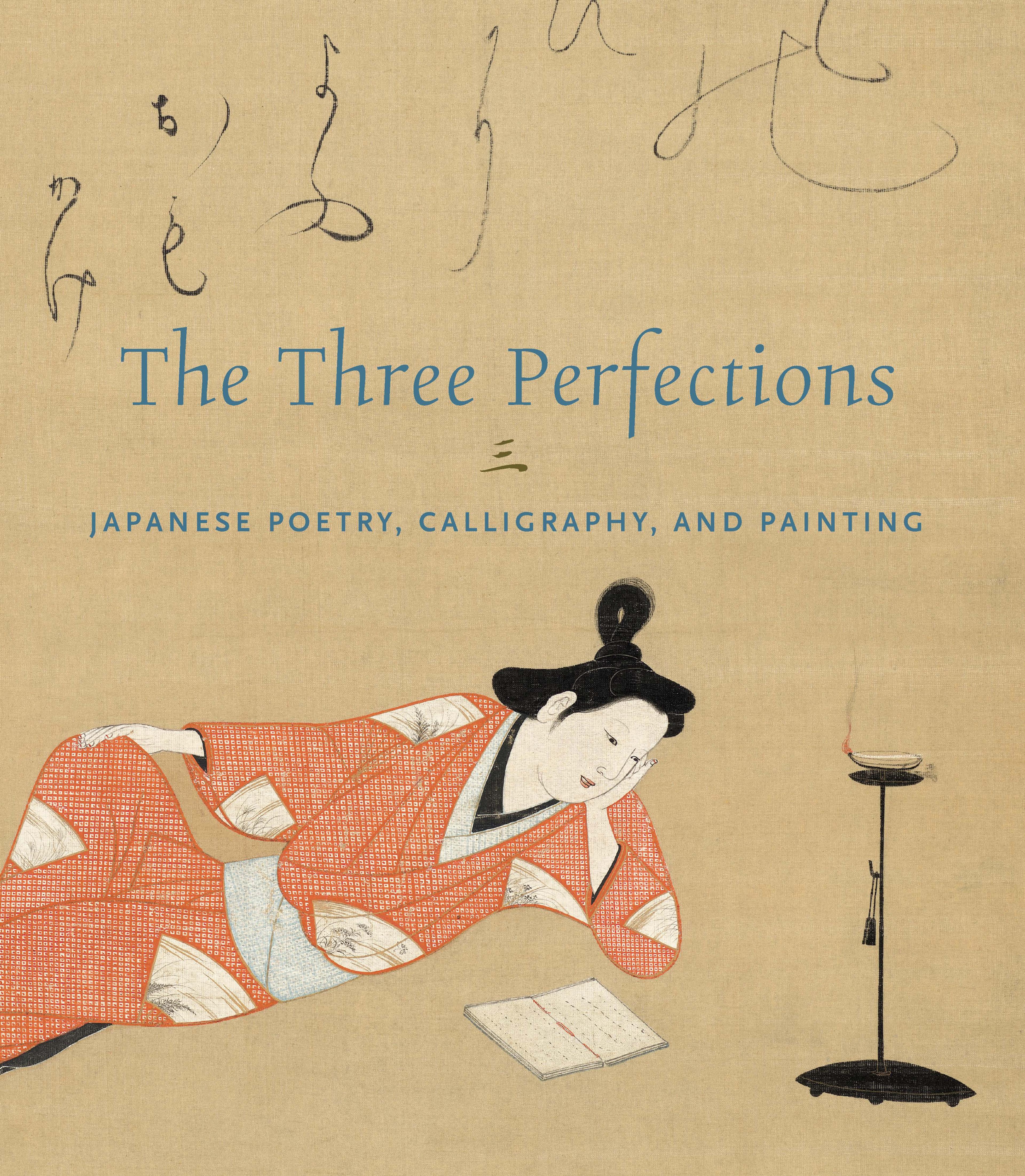Screens with Chinese Poems
Ryōkan Taigu studied model books of Japanese and Chinese brush writing in cursive script. The script’s simplified forms, abbreviating the rigid structures of characters through fluid curvatures, became prevalent in his calligraphies, which he executed with a thin brush to emphasize the liberated shapes of the characters.
The opening poem on the left-hand screen reveals that, for Ryōkan, calligraphy was a means of pursuing Buddhist teachings. It reads:
吾与筆硯有何緣 一回書了又一回
不知此事問[阿]誰 大雄調御天人師
What karmic bond draws me
to the brush and inkstone?
Once I have written, I write yet again.
I know not whom to ask about this matter,
the Buddha, the Great Mentor,
the Teacher of Gods and Men.
In this pair of screens, twelve individual sheets are mounted within borders of gold-painted paper that has been pressed to resemble the texture of silk. The Sōtō Zen monk Ryōkan Taigu transcribed nine original Chinese poems in his unrestrained cursive style. Instead of a conventional composition, with characters of similar size aligned in columns, Ryōkan opted for a haphazard arrangement of variably spaced and scaled characters.
The first poem describes an unexpected encounter with his literati friend Kameda Bōsai (1752–1826), a calligrapher also renowned for his idiosyncratic cursive script:
鵬齋逸才子 因何此地來
昨日鬧市裏 相見咲呵々
Bosai, the unfettered genius,
why has he come to this place?
Yesterday in the bustling marketplace
we met and laughed with joy.
The opening poem on the left-hand screen reveals that, for Ryōkan, calligraphy was a means of pursuing Buddhist teachings. It reads:
吾与筆硯有何緣 一回書了又一回
不知此事問[阿]誰 大雄調御天人師
What karmic bond draws me
to the brush and inkstone?
Once I have written, I write yet again.
I know not whom to ask about this matter,
the Buddha, the Great Mentor,
the Teacher of Gods and Men.
—Trans. Tim T. Zhang
The opening poem on the left-hand screen reveals that, for Ryōkan, calligraphy was a means of pursuing Buddhist teachings. It reads:
吾与筆硯有何緣 一回書了又一回
不知此事問[阿]誰 大雄調御天人師
What karmic bond draws me
to the brush and inkstone?
Once I have written, I write yet again.
I know not whom to ask about this matter,
the Buddha, the Great Mentor,
the Teacher of Gods and Men.
In this pair of screens, twelve individual sheets are mounted within borders of gold-painted paper that has been pressed to resemble the texture of silk. The Sōtō Zen monk Ryōkan Taigu transcribed nine original Chinese poems in his unrestrained cursive style. Instead of a conventional composition, with characters of similar size aligned in columns, Ryōkan opted for a haphazard arrangement of variably spaced and scaled characters.
The first poem describes an unexpected encounter with his literati friend Kameda Bōsai (1752–1826), a calligrapher also renowned for his idiosyncratic cursive script:
鵬齋逸才子 因何此地來
昨日鬧市裏 相見咲呵々
Bosai, the unfettered genius,
why has he come to this place?
Yesterday in the bustling marketplace
we met and laughed with joy.
The opening poem on the left-hand screen reveals that, for Ryōkan, calligraphy was a means of pursuing Buddhist teachings. It reads:
吾与筆硯有何緣 一回書了又一回
不知此事問[阿]誰 大雄調御天人師
What karmic bond draws me
to the brush and inkstone?
Once I have written, I write yet again.
I know not whom to ask about this matter,
the Buddha, the Great Mentor,
the Teacher of Gods and Men.
—Trans. Tim T. Zhang
Artwork Details
- 良寛大愚筆 漢詩六曲屏風一双
- Title:Screens with Chinese Poems
- Artist:Ryōkan Taigu (Japanese, 1758–1831)
- Period:Edo period (1615–1868)
- Date:early 19th century
- Culture:Japan
- Medium:Pair of six-panel screens: ink on paper
- Dimensions:Overall (Each): 68 in. × 12 ft. 4 1/8 in. (172.7 × 376.2 cm)
Image (Panels 1 & 6 both Screens): 52 15/16 × 19 5/16 in. (134.5 × 49 cm)
Image (Panels 2,3,4,5 both screens): 52 15/16 × 21 1/16 in. (134.5 × 53.5 cm) - Classification:Paintings
- Credit Line:Mary and Cheney Cowles Collection, Gift of Mary and Cheney Cowles, 2023
- Object Number:2023.583.23.1, .2
- Curatorial Department: Asian Art
More Artwork
Research Resources
The Met provides unparalleled resources for research and welcomes an international community of students and scholars. The Met's Open Access API is where creators and researchers can connect to the The Met collection. Open Access data and public domain images are available for unrestricted commercial and noncommercial use without permission or fee.
To request images under copyright and other restrictions, please use this Image Request form.
Feedback
We continue to research and examine historical and cultural context for objects in The Met collection. If you have comments or questions about this object record, please contact us using the form below. The Museum looks forward to receiving your comments.
